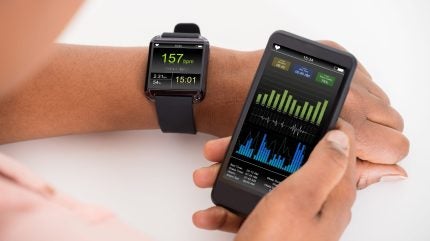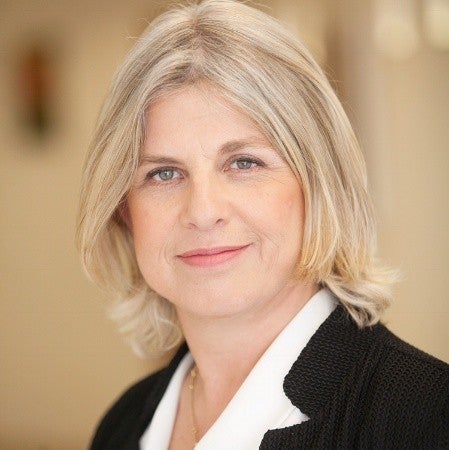
In a world where people are living for longer, there is a growing movement for monitoring tools to support elderly populations in their daily lives and enable remote assistance as required.
There is also a push to provide the general population with guidance on how to improve their health to ensure greater well-being as they age. But challenges exist in reaching patients in need, and complex go-to-market environments for diagnostics and remote monitoring devices.

Discover B2B Marketing That Performs
Combine business intelligence and editorial excellence to reach engaged professionals across 36 leading media platforms.
In Israel, the population is ageing rapidly, and life expectancy is expected to continue to rise, according to a study by the Taub Center for Social Policy Studies in Israel. The country’s population aged 75 years and up has grown on average by approximately 9,000 individuals per year, and life expectancy is increasing.
In 2023, investment in patient monitoring technologies stood at around $19m in Israel, down from $21m in 2022, according to GlobalData’s Market Size & Growth database.
At the Biomed Israel 2024 conference, Team8 Health managing partner Varda Shalev moderated a session titled “What Can We Do to Make Healthier Ageing a Reality? Embracing Digital Innovations for Lifelong Wellness”.
Keynote speakers included Joe Coresh, founding director of the Optimal Aging Institute at NYU Grossman School of Medicine.

US Tariffs are shifting - will you react or anticipate?
Don’t let policy changes catch you off guard. Stay proactive with real-time data and expert analysis.
By GlobalDataMedical Device Network sat down with Shalev to find out more about the focus areas for ageing, digital healthcare solutions, and the insights gained from this year’s conference.

Ross Law (RL): What are the key focus areas for ageing populations?
Varda Shalev (VS): With ageing, today we are not talking only about life expectancy, but also about quality of life. Older people are often lonely, so the first thing that I look towards is maintaining their window to the world, either in talking to loved ones, being part of elderly communities and social networks, or keeping them in touch with their physicians, nurses, and caregivers.
The other factor in ageing populations centres around patient monitoring, and today many good monitoring tools are available. However, these can have downsides as well as upsides, because they can induce alert fatigue, or create false alarms, and this can create anxiety for patients. But when used properly, remote patient monitoring tools can nowadays get a lot of data, and this can be used to create, for example, early detection alerts for patients if they suffer a fall. Patient monitoring can now also take the form of local monitoring, but remote alert. For example, if patients have a device such as a watch, this can be used to alert a caregiver about any issues.
The other aspect of patient monitoring relates to habits, such as making sure patients are ingesting the right food. Companies that presented at Biomed included Lumin, which checks patients’ metabolism, and makes advisements around what they need to eat. Older populations lose muscle and can’t get it back, so guiding a patient’s food intake is another important monitoring tool.
RL: What is your outlook on ageing?
VS: I see ageing starting at the age of zero; when you’re born, you start ageing. Monitoring tools are increasingly important in supporting optimal ageing, teaching people about what they should avoid, like smoking, and informing them on the benefits of leading an active lifestyle.
The same is true of sleep. As a family physician, it took me a few years to understand that the day starts at night. If you do not sleep well at night, you do not have a good day. Many times, people are not even aware of this connection. I have this ring wearable, for example, that indicates how well I slept each night and what the quality of that sleep was. Monitoring devices of this nature help equip people with a better awareness of the overall picture of their well-being, which is so often informed by their daily habits.
There are also a few digital companies that are doing early detection for illness. If someone is at risk of stroke, for example, there are tools that can help detect it earlier. With monitoring tools that take a preventative approach, many medical issues can now be detected earlier, which results in better patient outcomes.
RL: What were some of the most interesting insights out of this year’s Biomed?
VS: The session I moderated spoke a lot about cardiovascular prevention. Most people will develop hypertension with age, so one factor of diagnostics and monitoring aims at prevention, by advising people against eating too much salt to delay hypertension, and for them to lead more active lifestyles. But this will also delay dementia risk. And that’s something people often don’t catch. If the awareness process, which some monitoring devices aim to facilitate, begins earlier, dementia may be a preventable risk. The same thing, for example, relates to hearing aids. People don’t like to do it and when you look at the literature, it takes a person seven years from getting the recommendation for a hearing aid to buying one. But we know that if you don’t hear well, you don’t communicate as well, and this also puts people at risk of getting dementia earlier.
RL: What challenges exist in digital health marketing and promotion?
VS: At Team8, we have a strong cyber team. This provision gets sold to a CISO. In healthcare, by contrast, the go-to-market process for companies we support is more complicated; they could be selling to the payer or the provider, and within the provider, it can be to the CEO, the CMO, the chief innovation officer and so on.
In addition, the elderly population is not very vocal. They often don’t demand these health solutions. In getting wider commercialisation of products mentioned, which are either preventative approaches to support ageing and better outcomes or monitoring devices to maintain a good quality of life into old age. I think we need to listen to elderly populations a lot more to understand what their specific needs and requirements are.
Sometimes, the best strategy for getting to older people who would benefit from digital health solutions is to go to the caregivers. They should be targeted as a connective part in helping these digital health innovations reach wider elderly patient populations.
RL: How does Team8 differentiate?
VS: At Team8, we think about big problems. One of the problems we are thinking of is the need to talk not only to the healthcare system but also to older people, to understand what the big problems are and whether we can solve them.
We are beginning to use Generative AI (GenAI) to be able to reach a lot more people because, in healthcare, there are never enough physicians, nurses, and other caregivers. I think that by using the likes of large language models (LLMs), GenAI and robotics, we will, over time, facilitate the ability to get to a lot more people. This will help to address healthcare needs and monitor elderly patients in need of assistance, but it can also serve as a tool to inform and educate people, from an early stage, to ensure optimal ageing and ultimately improve wellbeing as they enter old age.





